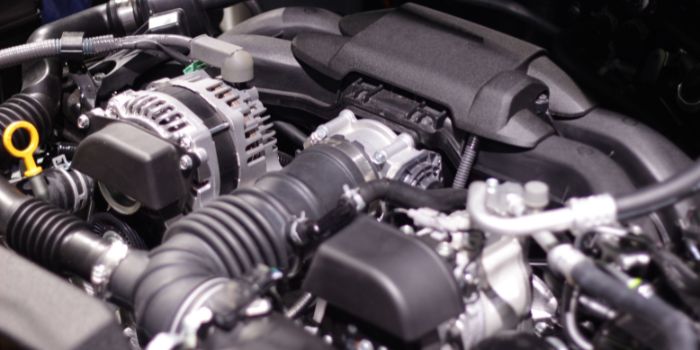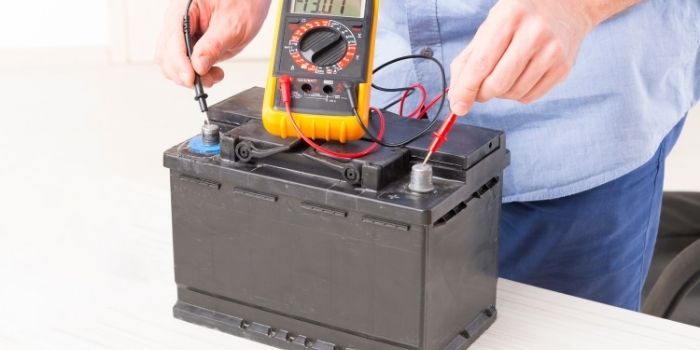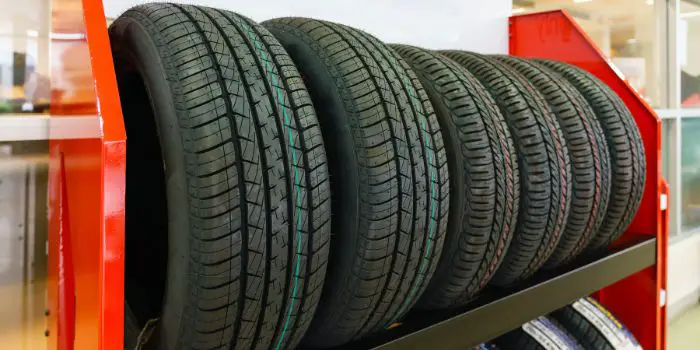
If you’ve ever wondered what keeps those old tractors, vintage motorcycles, or rugged off-road vehicles so tough and reliable, the answer might surprise you — it’s not just the engine, but what’s beneath them: diagonal tires.
While modern vehicles often boast high-tech radials, diagonal tires (also called bias-ply tires) still hold their ground in some of the most demanding and traditional uses.
Let’s dive into what makes them special, how they work, and why they continue to have loyal users even in today’s high-speed world.
Diagonal Tyres
Diagonal tires, also known as bias-ply tires, are built with multiple layers of fabric cords (plies) that run diagonally across each other — typically at 30° to 40° angles.
These intersecting layers form a crisscross pattern from bead to bead, giving the tire its name and distinct structure.
Unlike radial tires, where the cords run perpendicular to the direction of travel, diagonal tires distribute load across a broader area of the carcass.
This gives them extra toughness and flexibility, especially on uneven or rough surfaces.
In simple terms, diagonal tires are built for endurance, not speed.
Their design helps vehicles absorb shocks, carry heavy loads, and tackle tough terrain — even when comfort takes a back seat.
How to Identify Diagonal Tires?
You can easily identify diagonal (bias-ply) tires by looking at the sidewall markings and tread structure:
- Check the tire code — if you see a letter “D” between the numbers (e.g., 6.00-16D), it means it’s a diagonal tire.
- In contrast, a “R” in the code (e.g., 205/55R16) indicates a radial tire.
- Diagonal tires also have thicker, more rounded sidewalls and often look stiffer and bulkier, with the tread and sidewall appearing to move as one piece.
Quick tip: “D” = Diagonal (Bias), “R” = Radial — that’s the simplest way to tell.
Common Uses of Diagonal Tires
You won’t often find diagonal tires on your modern sedan, but they still dominate in industries where strength and resilience matter more than smooth rides or fuel efficiency.
Common applications include:
- Agricultural machinery – tractors, harvesters, and loaders
- Construction and industrial equipment – forklifts, graders, and bulldozers
- Two-wheelers – classic motorcycles and some off-road bikes
- Heavy-duty trucks and trailers operating at low speeds
- Vintage and military vehicles where authenticity or ruggedness is key
In short, diagonal tires shine wherever durability, traction, and impact resistance matter most.
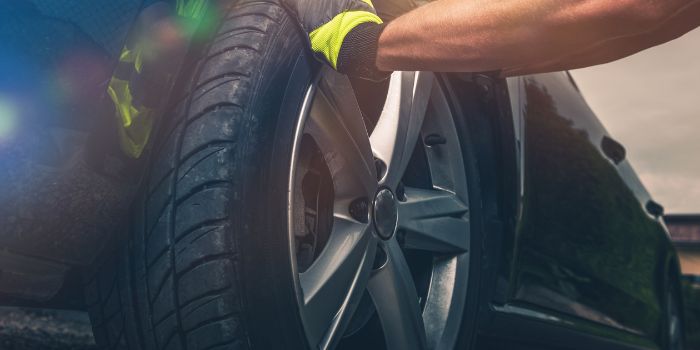
How Do Diagonal Tyres Actually Work?
The secret lies in their interlaced ply structure.
Each diagonal layer of cord reinforces the other, creating a sturdy network that flexes as a unit when the tire rolls.
This shared flexibility allows the entire body of the tire — not just the tread — to absorb impacts and distribute pressure evenly.
When carrying heavy loads or driving on rough terrain, this flexing action prevents sudden damage and helps maintain traction.
However, it also generates more heat and rolling resistance, which limits their performance at higher speeds.
Think of it this way: radials are sprinters, designed for speed and efficiency, while diagonals are marathoners, built for endurance and resilience.
Construction and Characteristics
Here’s what defines a diagonal tire:
- Multiple bias layers (often nylon, polyester, or rayon) placed diagonally over each other.
- Uniform sidewall and tread movement, since both areas flex together.
- Thicker and stiffer sidewalls, providing protection against cuts and punctures.
- Less separation between tread and sidewall, offering better shock absorption on uneven surfaces.
Because the entire carcass moves as one, diagonal tires can endure heavy deformation without immediate failure — a major reason they’re preferred in tough working conditions.
Advantages and Disadvantages of Diagonal Tires
If your vehicle spends more time in the field than on the highway, diagonal tires aren’t just an option — they’re a smart, dependable choice.
Because sometimes, the toughest jobs still demand the toughest tires.
But before you go for them, here’s a quick look at their pros and cons which you should know…
Pros
- Rugged durability: Excellent resistance to cuts, tears, and impacts on rough terrain.
- Superior load-carrying capacity: The stiff sidewalls make them ideal for heavy machinery.
- Better stability on soft surfaces: Their flexible carcass adapts well to off-road conditions.
- Cost-effective for low-speed operations: Generally cheaper to produce and maintain.
Cons
- More heat build-up: The interlaced plies create friction, reducing high-speed performance.
- Shorter tread life: The flexing of the entire structure causes faster wear.
- Less comfort: The stiff sidewalls make the ride harsher on paved roads.
- Lower fuel efficiency: Higher rolling resistance means more energy consumption.
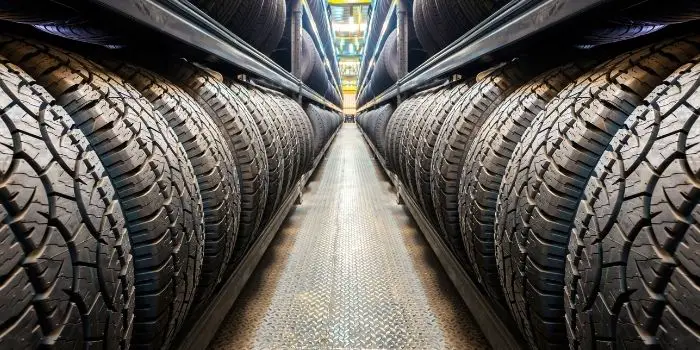
What are the Differences Between Radial and Diagonal Tires?
The key difference between radial and diagonal tires is their construction — how the internal layers (plies) are arranged and how they flex under load.
This single factor affects everything from performance and comfort to durability and cost.
Here’s a quick breakdown:
| Feature | Radial Tires | Diagonal (Bias-Ply) Tires |
|---|---|---|
| Ply Direction | Cords run radially from bead to bead (at 90° to the direction of travel). | Cords are laid diagonally, crisscrossing each other at 30°–40° angles. |
| Flexibility | Tread and sidewall flex independently, offering a smoother ride. | Tread and sidewall flex together, making them stiffer. |
| Heat Generation | Less heat buildup — better for high-speed driving. | More heat buildup — suitable for low-speed, heavy-duty use. |
| Durability | Longer tread life on highways, but sidewalls are softer. | Extremely tough sidewalls, resistant to cuts and punctures. |
| Ride Comfort | More comfortable and stable at higher speeds. | Harsher ride, especially on paved roads. |
| Fuel Efficiency | Lower rolling resistance, better mileage. | Higher rolling resistance, less fuel-efficient. |
| Best Suited For | Cars, trucks, and high-speed vehicles. | Tractors, off-road vehicles, and heavy equipment. |
In short:
- Radial tires are designed for speed, comfort, and efficiency.
- Diagonal tires are built for strength, toughness, and heavy-duty work.
What are the Other Common Types of Tires You Can Buy On The Market?
There are various factors that govern the driving experience, however, one that stands out is the quality of tires being utilized in the car
What we have concluded is that tires leave a lasting impact on how the driving experience is for the driver.
Now there are different types of tires to go with, we have listed them each in turn.
1. Cross Ply-Bias Tire
This kind of tire packs high rolling resistance and contributes lesser in terms of control on the tires.
Usually what happens is that mismanagement of traction occurs which prevents having the smoothest experience for the driver.
When on the speed with such tires, the chances of getting into an accident are higher but at low speeds, you can have a seamless driving experience but you are less likely to get into accidents.
It will be handy on surfaces that are rough since they are made from cross-ply.
2. Belted Bias Tire
This tire is a blend of two bias tires. They are glued together via the use of tread.
The belted bias provides for reduced rolling resistance and ultimately gives a smoother driving experience than its counterpart based on a single bias tire.
The material from which it is made or which is used in its manufacturing is piled which is further made from polyester, nylon, and rayon.
All this while the circumferential belts are placed at different angles.
This, in turn, gives an element of safety that adds to the overall performance thereby leading to an improved driving experience.
3. Tube-Less Tire
If we talk about tube-less tires then we are referring to hollow centers and lightweight.
In addition, we experience improved cushioning as a result due to low cost and no apparent pressure residing inside.
As a result, the reign of flat tires becomes a trendsetter in itself.
How to Get a Good Deal When Purchasing Diagonal & Radial Tires for Your Vehicle?
Buying cheap as well as high-quality tires is the main concern for people who want to change their old car tires.
The main concern of a person who is searching out for an online offer on cheap tires is whether the tires would be suitable for their vehicle or not and whether it is of high quality or not.
However, now the web stores sell tires at a good price and arrangements for mounting tires at a local shop in your area without charging a penny for this service.
Once you purchase through their website they allow you to select a list of locations in your area where you can get the car fixed on your tires.
The online dealer’s cheap tires have a good connection with a wide range of workshops that allow you to get a quick fixing without any problem.
These online websites provide cheap affordable tires and have the guarantee of high quality and warranty.
The most important thing is to find the right source from where you can buy cheap used tires and wheels in good condition.
Also before planning to buy the best tires for your vehicle get information about the tire size and type.
After you have known about your tire type and size, consider the below-mentioned tips.
1- Visit Auto Flea Markets
Auto flea markets are the places where you can find cheap used tires and wheels in good condition.
No joking, but these markets/events take place for these reasons where the car owners can find affordable spare parts for their cars.
2- Look At The Junk Yards
Though the thought of looking for the used tires and wheels at the junkyard doesn’t appeal to you but believe it you are not buying the scrap.
You can always phone call the junkyard and ask for the availability of the kind of tires you need and they might have them and sell it to you at cheaper rates.
3- Custom Wheel Shops
This is another great way to find used and cheap tires. These custom wheel shops are one of the best resources for the used tires that are available in excellent condition.
Apart from the above mentioned, you can search online where there is a website nowadays selling used stuff.
Keep in mind, that although buying cheap used tires can save you good money, this is not an option for many.
Final Thoughts
Diagonal tires may not be the first choice for modern highways, but their rugged design and dependable performance keep them indispensable in agriculture, construction, and off-road environments.
Their crisscross ply construction gives them exceptional load-carrying strength, cut resistance, and stability on uneven terrain.
In short, while radial tires dominate modern roads for their comfort, efficiency, and longevity, diagonal tires continue to prove their worth in rugged, off-road, and industrial applications. Their tough sidewalls, simple construction, and load-bearing strength make them ideal where reliability matters more than speed.

Based in Orem (Utah) John Paterson graduated from Utah Valley University and has begun writing in 2009. He has a large wealth of experience in writing articles related to cars, automotive repair, wheels, cleaning/maintenance, and much more. He has also written instructional articles in a similar niche for a few online publications as well. Currently, he works as a mechanic in his personal garage shop where he loves serving his countrymen from his heart.


